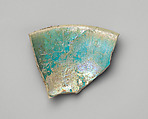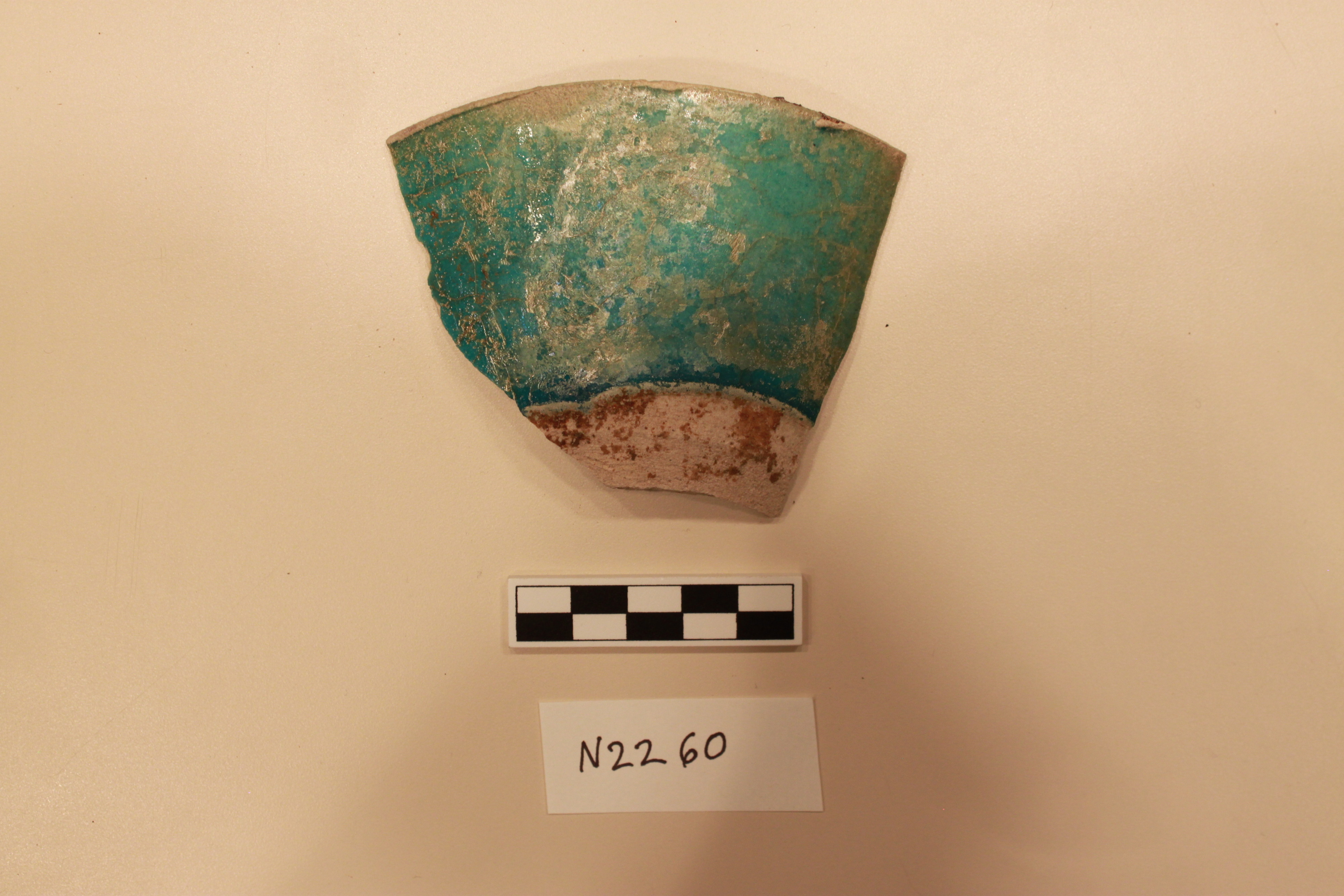Fragment of a Bowl
Not on view
This bowl was unearthed at Nishapur in excavations carried out by the MET in the 1930s and 1940s and was acquired by the Museum through a division of finds with the Iranian government at the time. It is very thinly potted and displays a finely tapered rim. The transparent turquoise glaze appears iridescent due to decay in the soil.
This object was most probably made in the 11th or 12th century, at a time when potters were experimenting with new technologies such as stonepaste. Early stonepaste vessels were mostly monochrome-glazed, in turquoise, purple, white, blue, with the occasional splash of a different color. They were thinly-potted, such as in this example. West of Nishapur, in central Iran, vessels displayed a range of scalloped, lobed, and variably decorated rims, suggesting that the development of the medium followed slightly different paths in the two regions.
Due to rights restrictions, this image cannot be enlarged, viewed at full screen, or downloaded.
This artwork is meant to be viewed from right to left. Scroll left to view more.





